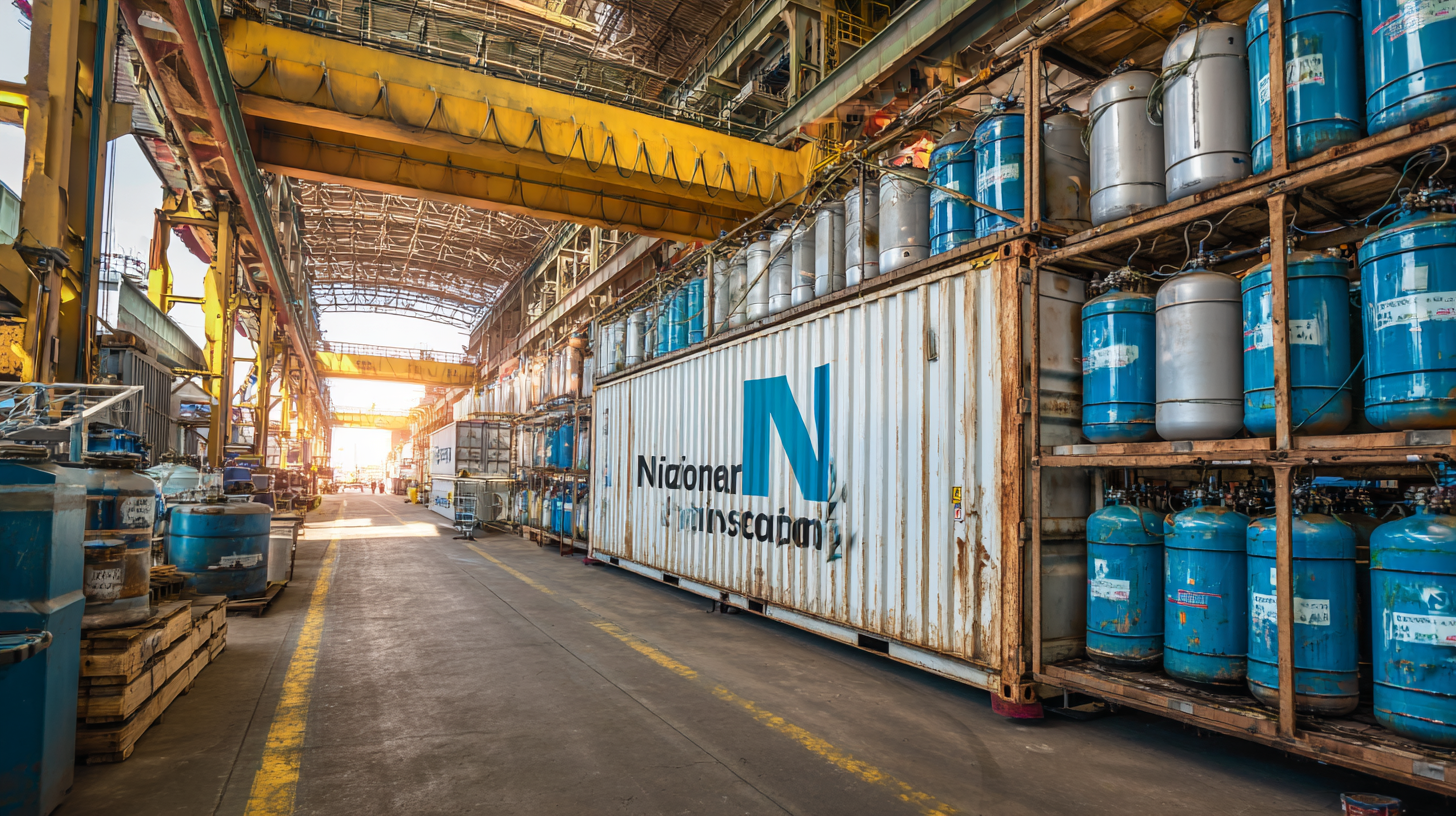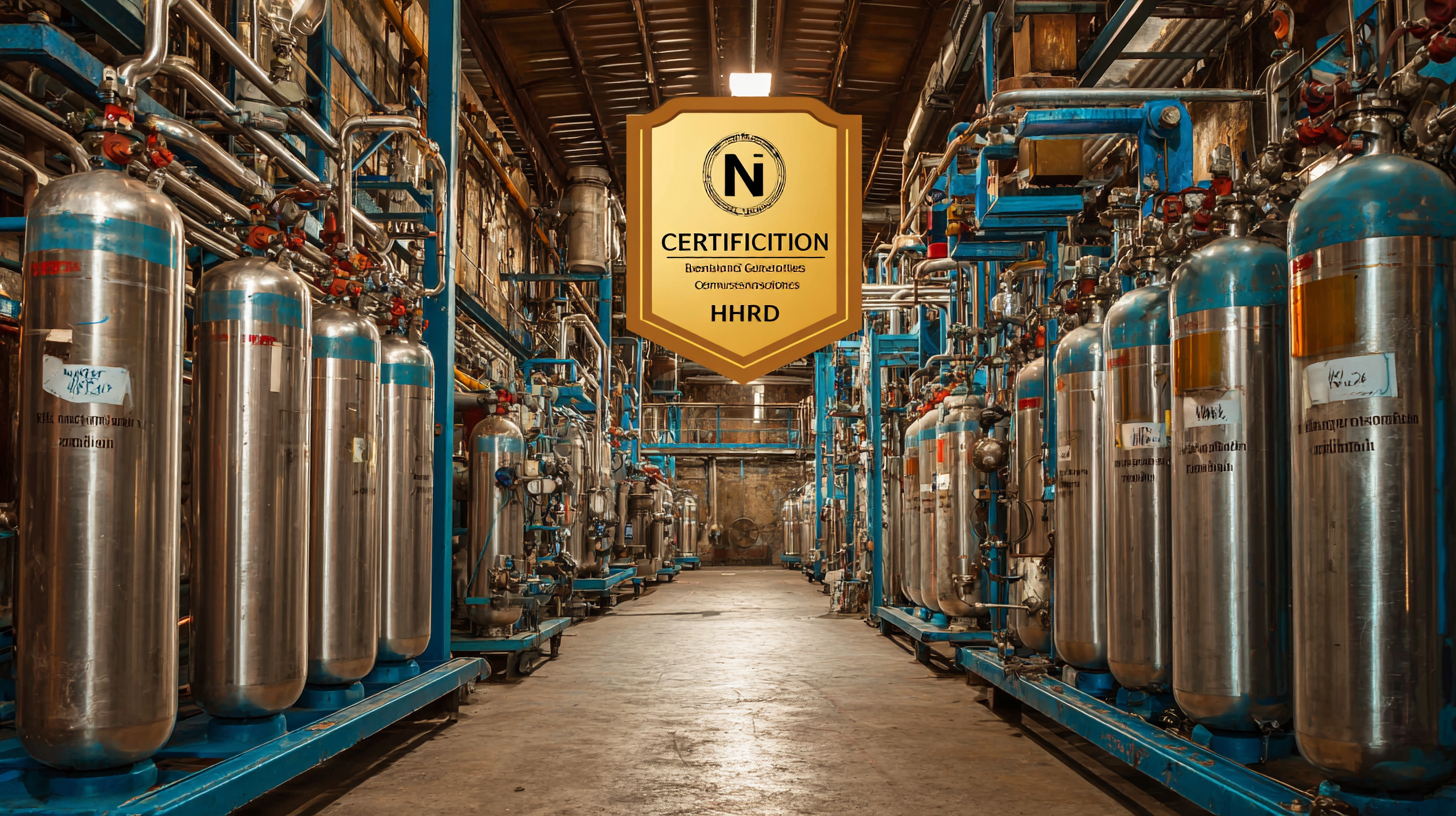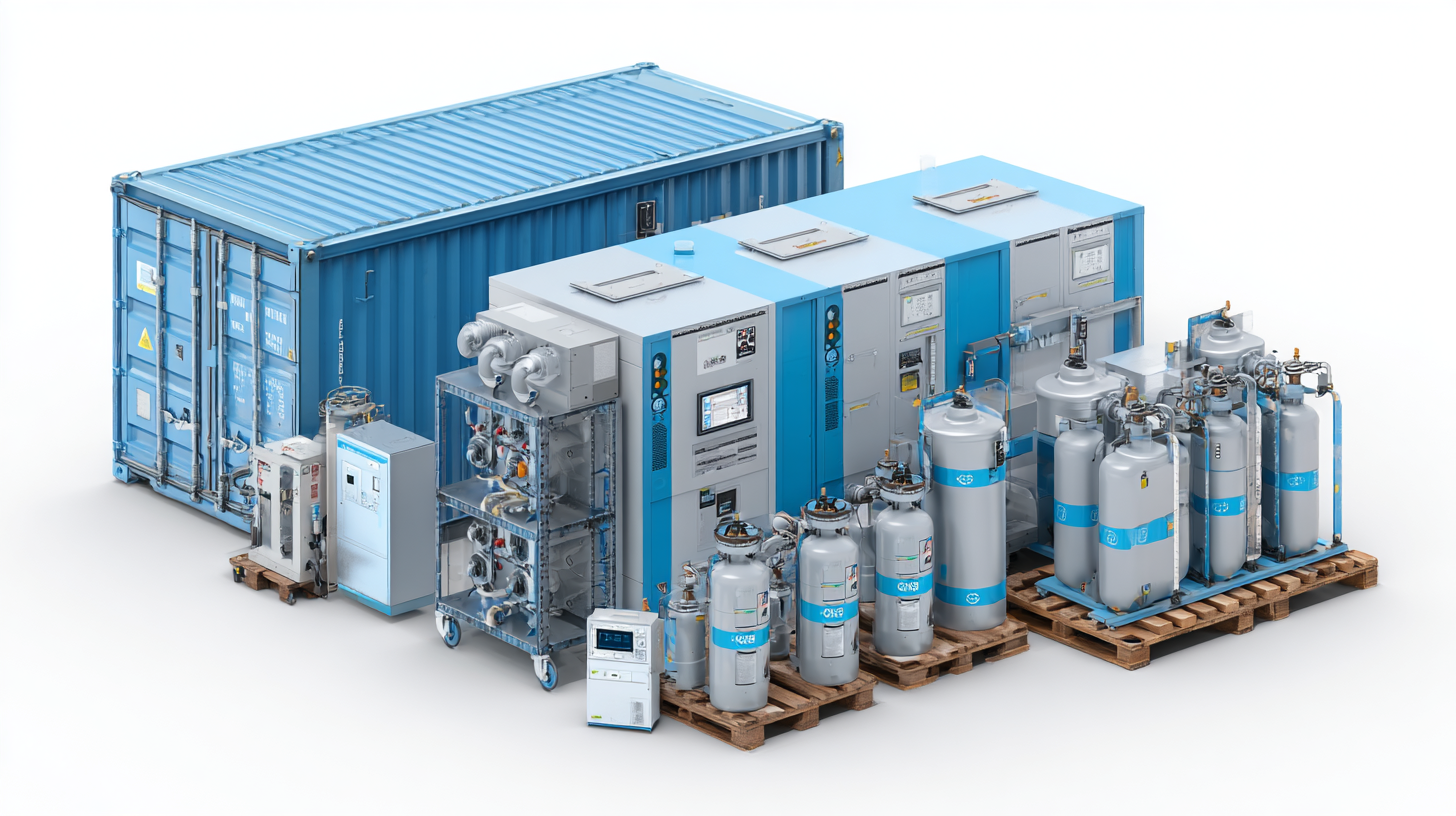
Navigating Export Certifications for the Best Nitrogen Generators: A Global Procurement Guide
In today's rapidly evolving global market, the demand for high-quality nitrogen generators is surging, driven by the need for enhanced process efficiency and product purity across various industries. According to a recent report by MarketsandMarkets, the global nitrogen generator market is projected to reach $5.42 billion by 2026, expanding at a CAGR of 7.5% from 2021 to 2026. As businesses increasingly recognize the advantages of on-site nitrogen generation, understanding the complexities of export certifications becomes crucial for procurement professionals. Ensuring compliance with international standards not only facilitates smoother operations but also unlocks opportunities for cost savings and reliability. This blog aims to provide a comprehensive guide for navigating the intricacies of export certifications relevant to nitrogen generators, empowering organizations to make informed decisions and enhance their competitive edge in the marketplace.

Understanding Export Certifications for Nitrogen Generators
When navigating the complex landscape of export certifications for nitrogen generators, it’s crucial to understand the various requirements that regulate international procurement. Export certifications serve as a guarantee that the nitrogen generators meet specific safety, environmental, and operational standards set forth by the destination country. This understanding not only facilitates smoother transactions but also ensures compliance with legal obligations that can otherwise lead to costly delays or penalties.
**Tip:** Before initiating a purchase, research the specific export certification requirements in your target market. Different regions have unique standards for nitrogen generators, including ISO certifications, CE marking, and others. Familiarize yourself with these documents to streamline the procurement process.
Additionally, choosing the right supplier who understands these certifications can make a significant difference. Engaging with manufacturers who have a track record of exporting nitrogen generators smoothly can provide valuable insights and support throughout the certification process.
**Tip:** Always request documentation from suppliers that showcases their certifications and previous export experiences. This will not only reassure you of their credibility but also aid in a transparent transaction that aligns with regulatory expectations.
Navigating Export Certifications for the Best Nitrogen Generators: A Global Procurement Guide
| Certification Type | Description | Region/Country | Validity Period | Application Process |
|---|---|---|---|---|
| ISO 9001 | Quality Management Systems | Global | 3 years | Application through accredited body |
| CE Marking | Compliance with EU safety standards | European Union | None (valid until revoked) | Self-declaration or third-party assessment |
| UL Certification | Product safety assurance | United States | Varies | Submit product for testing |
| EPA Approval | Regulatory compliance for emissions | United States | Whenever regulations change | Submission of environmental impact report |
| ATEX Directive | Equipment for explosive atmospheres | European Union | Based on product type | Third-party certification required |
Key International Standards for Nitrogen Generator Compliance
In the realm of global procurement for nitrogen generators, understanding key international standards is crucial for compliance and environmental sustainability. The rise of stringent NOx emissions regulations, such as the IMO NOx Tier III limits, echoes the need for nitrogen generators to align with these evolving environmental norms. These standards not only aim to curb nitrogen oxide emissions from marine sources but also reflect a broader shift towards eco-friendly operations in various industries, including power generation and transportation.
As markets transition—like India's move to CPCB IV+ emissions standards for gensets—companies must ensure that their nitrogen generators meet these rigorous requirements. This entails adopting advanced technologies that limit NOx emissions and enhance overall efficiency. Furthermore, the discrepancies between real-world emissions from diesel vehicles and certification limits highlight the importance of rigorous compliance checks. By adhering to international standards, manufacturers can contribute to a cleaner environment while maintaining a competitive edge in the global market.
Navigating Export Certifications for Nitrogen Generators
The Importance of Quality Assurance in Nitrogen Exportation
When it comes to exporting nitrogen generators, quality assurance plays a vital role in ensuring that the products meet international standards. According to a report from the International Organization for Standardization (ISO), nearly 70% of companies that prioritize quality assurance in their export processes report higher customer satisfaction rates. This statistic underscores the importance of stringent quality measures in facilitating global trade and enhancing product reliability.
To navigate the complexities of export certifications effectively, companies should consider implementing robust quality management systems. Tips for maintaining quality assurance include regular third-party audits, adherence to ISO 9001 standards, and ensuring traceability throughout the production and export process. By establishing such protocols, businesses can mitigate risks associated with non-compliance and enhance their market position.
Moreover, it’s essential to stay informed about the latest regulatory updates related to nitrogen exportation. According to the Global Nitrogen Initiative, approximately 45% of nitrogen generators manufactured are exported, making it crucial for manufacturers to keep abreast of changing regulations to avoid costly delays. Engaging with industry experts can provide insights into best practices and compliance requirements, thus facilitating smoother operations in the global marketplace.
A Step-by-Step Guide to Navigating Export Documentation
Navigating export documentation can be daunting, especially for those involved in global procurement, such as sourcing nitrogen generators. Understanding the necessary certifications and paperwork is crucial to streamline the export process and ensure compliance with international regulations. For instance, recent statistics show that inefficient export practices can lead to up to a 30% increase in costs, emphasizing the importance of well-organized documentation.
 **Tips:** Always keep track of the latest export regulations in your target markets. Utilize government and trade organization resources to obtain the most current data on required certifications. Additionally, consider engaging with logistics experts who can provide insights into the intricacies of export documentation, thereby reducing the likelihood of costly errors.
**Tips:** Always keep track of the latest export regulations in your target markets. Utilize government and trade organization resources to obtain the most current data on required certifications. Additionally, consider engaging with logistics experts who can provide insights into the intricacies of export documentation, thereby reducing the likelihood of costly errors.
Moreover, it’s essential to familiarize yourself with the specific standards and certifications needed for nitrogen generators in various regions. Research indicates that timely documentation can reduce shipment delays by more than 25%. Hence, preparing all necessary paperwork, such as export permits and compliance certificates, beforehand can significantly expedite the procurement process while ensuring that your business remains competitive in the global market.
**Tips:** Implement a checklist system for all required documentation before shipment. This can prevent oversights that often lead to regulatory issues. Regular training sessions for your procurement team on export documentation and compliance will also keep your operations up-to-date with the latest industry standards.
Tips for Successful Global Procurement of Nitrogen Generators
When it comes to successfully procuring nitrogen generators on a global scale, understanding export certifications is paramount. These certifications not only ensure compliance with international standards but also can significantly impact the efficiency and cost-effectiveness of procurement efforts. As the global nitrogen category is projected to grow at a CAGR of 9.9% from 2024 to 2030, it becomes increasingly crucial for businesses to navigate the intricacies of export regulations and certifications. Companies must stay informed about evolving requirements to avoid potential delays and penalties.

Additionally, fostering strong supplier relationships is vital in streamlining the procurement process. Engaging with suppliers who understand the certification landscape can lead to smoother transactions and help mitigate risks related to compliance. Moreover, leveraging supplier intelligence—gaining insights into their capabilities, market positioning, and potential risks—can provide companies with a competitive edge. As the demand for nitrogen generators rises, strategically navigating these facets will be key to achieving successful global procurement while maximizing value and minimizing disruptions in the supply chain.
